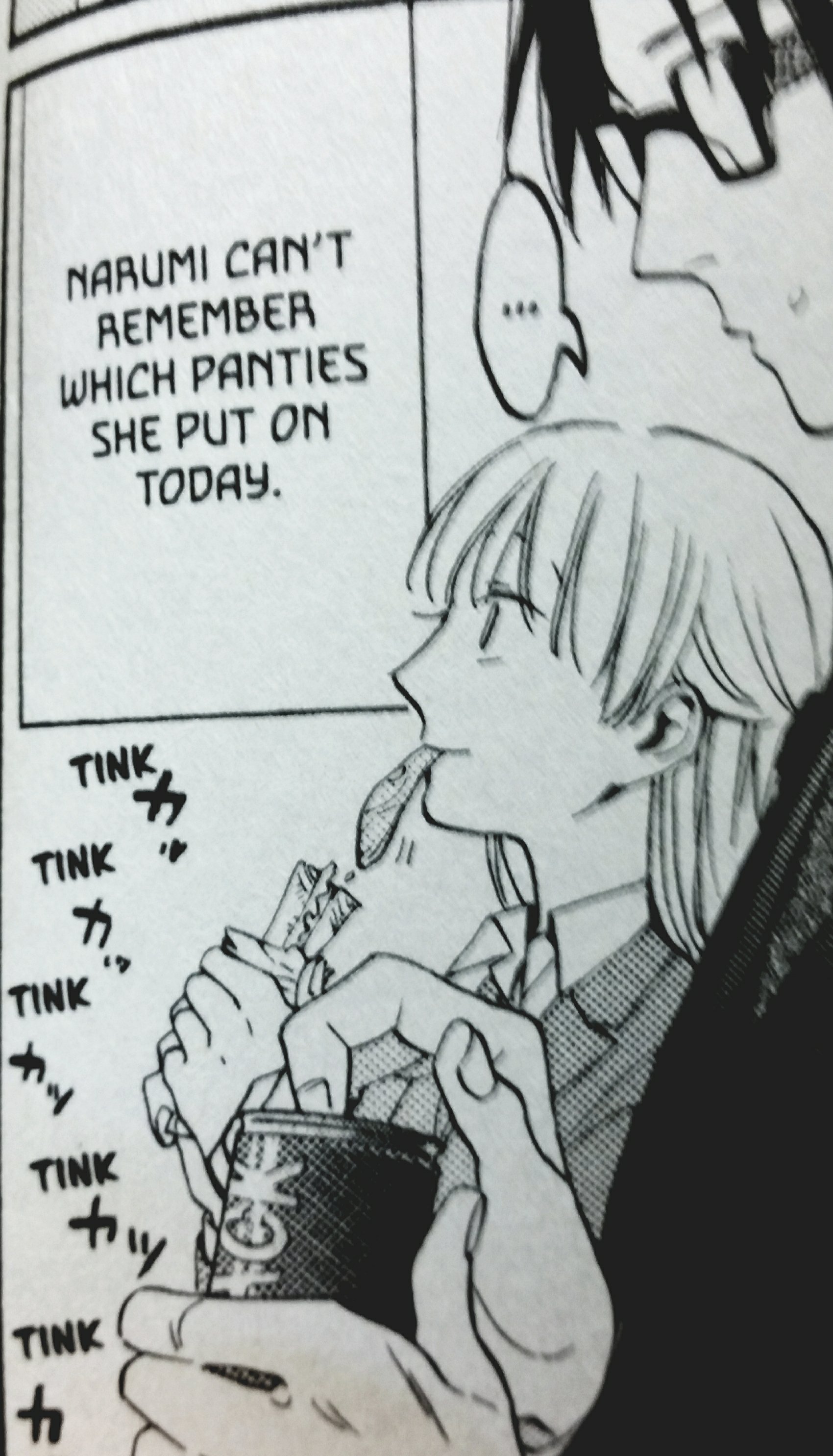It’s that time of year again, where every single nerd news site tells you what the best-of-the-best comics of the year are. I’m always wary of trying to make blanket statements about literature, but I did want to share a few of my favorites from this past year. I’ve done a LOT of reading, and I feel as though I’ve branched out more than usual (or more like, there have been more titles in Western comics that have appealed to me than there have been in the past).
I didn’t give myself a limit to the number of books I chose, nor any kind of guideline as to theme, tone, etc. I just picked the ones I felt strongly about! These are listed in roughly the order I read them in, and by no means in order of quality. They’re all top-notch, anyway!
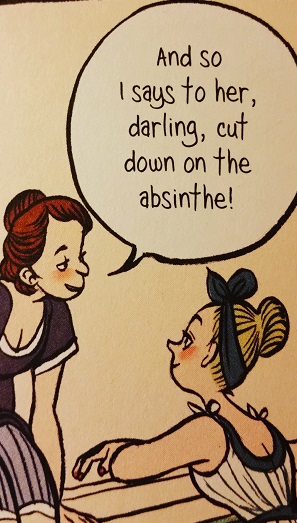
The Prince and the Dressmaker, by Jen Wang
Prince Sebastian has a BIG secret: sometimes he likes to wear dresses and go out on the town as Lady Crystallia. In addition to keeping this part of himself hidden from Parisian society, he has to deal with his parents determinedly seeking out a bride for him. Enter Frances, an extremely skilled seamstress with dreams of fashion design whom Sebastian employs to outfit him for all occasions, public and secret. The story of these two growing together and learning to be their best selves is captured incredibly in Wang’s bright, flowing artwork. Plenty of humor helps to balance out the heart-rending moments that remind the reader to never lose sight of the things that make them unique.
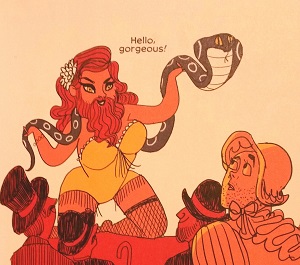
Brazen: Rebel Ladies Who Rocked the World, by Pénélope Bagieu
I genuinely did not expect to adore this book as much as I do. I’m not well-versed in the non-fiction graphic novel, and I’m often suspicious of cheery, pink-emblazoned “girl power” books — not because I don’t believe in girl power, but because it’s hard to encapsulate in one book what it is about womanhood that is so unique. That said, I was truly fascinated and enthralled by the stories that Bagieu, in her whimsical style, has presented in this hefty tome of awesome and awe-inspiring women. Women from all backgrounds, in all types of careers, with differing needs and goals, and with all sorts of romantic entanglements and personal dramas, are presented for the reader with reverence, joy, and good humor.
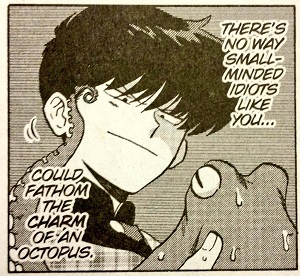
Go For It, Nakamura!, by Syundei
I have been seriously reveling in the increased publication of good, sweet, not-super-fetishistic BL manga this past year or so. In this exquisite example, young Nakamura knows for sure that he’s gay, and also knows for sure that he’s in love with his classmate, Hirose. The problem is, he doesn’t even know how to become friends with Hirose, never mind try to ask him out! Between caring for his pet octopus, perusing questionable BL for romance tips, and just generally trying not to act overly weird, will our stalwart hero ever secure Hirose’s friendship? A familiar story for anyone who was shy in high school, Go For It, Nakamura! uses awkwardness, hilarity, and genuine heart to create a sweet and fuzzy one-shot that will make you yearn for more. Syundei’s artwork is adorable, and very reminiscent of that of manga powerhouse Rumiko Takahashi.
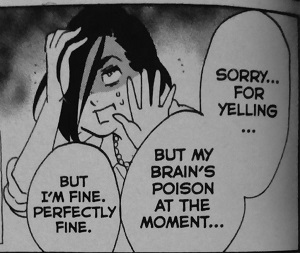
Tokyo Tarareba Girls, by Akiko Higashimura
I wrote about my initial reaction to volume one of Akiko Higashimura’s forays into 30-something woman angst back when the print version first came out. The series is now three print volumes in (with all volumes available digitally), and it has not stopped being maybe the most anticipated title in my pull at work. Higashimura’s ability to poke fun at the stupidity of a woman’s society-bred anxieties while treating the same character with sympathy and understanding is so incredible to me. I often find it hard to articulate what it is that makes this series so good, because it’s really everything. Please…I don’t often make demands, but read Tokyo Tarareba Girls.
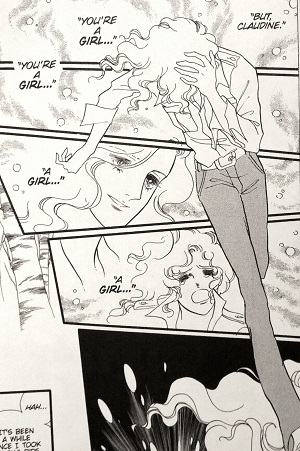
Claudine, by Riyoko Ikeda
I find this manga hard to recommend, even though I love it. It is a quick read; I read it from start to finish on my half-hour bus ride home from work one day. But it is also a dramatic and sad read, in true 70s shojo fashion. Our protagonist Claudine is assigned female at birth, but knows in his heart that he is a man. Even his own father embraces Claudine as more of a son than a daughter, going riding with him and treating him like his older brothers. Society in early 20th century France, however, is not as kind. To the rest of the world, Claudine is a girl, and the tragedy here lies in the outmoded concept that any woman he might love will never lead a fulfilled life with a “woman” partner. So in many ways, this is a fantastic achievement, being a trans story from 70s Japan; but it is also a story about a trans man from the perspective of a cisgender woman, writing at a time when shojo manga was about deep, dramatic personal struggles and utilizing queerness as a vehicle for those struggles. If you can go into it with the understanding that it is a sad story (and yes, I did cry on that fateful bus ride home), it is a simply gorgeous and heartbreaking work of tragedy.
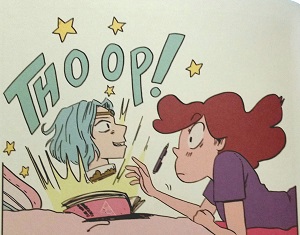
Making Friends, by Kristen Gudsnuk
I’ve been in love with Kristen Gudsnuk’s work ever since I read the first issue of Henchgirl, back when it was released by Scout Comics. Her artwork is fun, her dialogue is funny, and she makes plenty of obvious anime references that I feel are speaking directly to me and my sense of humor. So of course I was thrilled when Making Friends came out, and I was not disappointed. Protagonist Dany is starting middle school, where she is separated from her friends and everything that was familiar to her. She turns inward and begins to draw in the sketchbook she recently inherited from her recently deceased great-aunt. Soon she discovers that anything she draws in the sketchbook — including the head of her favorite anime badboy — comes to life! She quickly devises a plan to create a new, perfect best friend. But as we all know, magic has serious consequences, and Dany is going to have to figure out how to fix the mess she’s made. Gudsnuk does an excellent job of keeping this story about friendship and responsibility from becoming saccharine or tropey, instead treating every character with equal weight and relying on her uncanny knack for coming at a story from a slightly sideways perspective.
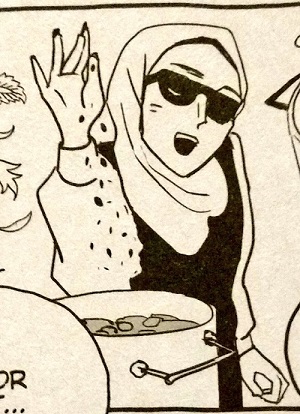
Satoko and Nada, by Yupechika and Marie Nishimori
This was absolutely one of my most anticipated titles of the year, and man oh man did it hit a home run for me. Upon initially receiving it I was uncertain, as it is laid out in 4-koma format, which I usually find cute but not particularly compelling. And yet in this easy gag style, with simple illustrations, Satoko and Nada manages to be a profoundly intimate story of friendship between women and across cultures. Nada is a college student from Saudi Arabia who is looking for a roommate. Satoko, a student in the same school, has recently arrived from Japan and chooses to become that needed roommate. Thus begins this tale of two people from very different backgrounds as they live together and learn all about each other and about their multicultural friends. Warm-hearted, informative, and full of meme references, this manga really surprised me in the best possible way. I want everyone to read it!
(Just an honorable mention here: I reread two of my absolute favorite series this year: Pet Shop of Horrors, by Matsuri Akino, and The Wallflower, by Tomoko Hayakawa. One day, I’d like to write at length about both of these series, but as they’re old and hard to find, I opted against adding them to this list. Look forward to an analysis of them one day, because I am very attached to them both!)
As you can see, I read a lot of very heartwarming stories by or about women this year. I have been immensely impressed by the range in stories and creators I’ve had access to, and that’s something I want to see continue to grow year by year. My reading list has been a bright spot in what has been a very tumultuous year otherwise (personally and in the world at large), and it gives me hope that more differing voices are being tapped to tell more and varied stories.
Looking forward to reading more in 2019!
otaku
"I'm Just A Gun-Totin' Weather Girl"
[HEADS UP: There are some very minor spoilers for the Cowboy Bebop series in this piece, so if that sort of thing bothers you I don’t recommend reading this!]
Cowboy Bebop is one of those series that literally every dude between the ages of 25-35 tries to recommend to every casual nerd. It has the distinction of being one of the best examples of anime, and of dubbed anime, from a very specific point in time, so people latch on to it as a classic and insist on acting completely scandalized when someone hasn’t seen it or doesn’t like it.
It’s that kind of behavior that I’ve mentioned before that I completely hate. And yet…I love Bebop. In fact, I recently convinced my coworker to watch the whole series — not because I told him he had to! But because he’s been enjoying noir comics lately, and I thought some of the themes would scratch a similar itch for him. He’s enjoying it thus far, I’m happy to report.
In general, I’m content to leave my discussions about Bebop in the past, or among like-minded friends. But on Thursday I had the incredible experience of being able to see the movie in theatres, and I can’t stop reflecting on how much I enjoyed it. I’ve seen the movie before, of course, but when it first hit US shores, it wasn’t in any theatres near me. At age 13, living in the middle of Connecticut, there was no option for me to see it that didn’t involve a multi-hour trip to either New York or Boston. I was heartbroken.
But I was finally able to live out my dream. I bought my ticket nearly a month in advance, I got to the theatre early, I bought way too much popcorn for way too much money, and I had an excellent time of it.
Before the movie, instead of endless previews or ads for other events, there was a short Q&A session with the dub voice actors. It lasted maybe ten or fiifteen minutes, but it was a nice little reintroduction to the characters and the movie specifically. It was amazing to hear how the VAs didn’t really alter their voices overmuch for their dub performances, so that these incredibly recognizable voices were coming out of the mouths of people I’ve seen before, but less frequently than their animated counterparts. Getting the little bit of background, and learning about the excitement of the actors to have worked on this project, definitely helped set the mood for the feature presentation.
Cowboy Bebop‘s opening sequence and song, “Tank!” are iconic at this point; for me, so too is the opening credit roll of the film, with its black and white panorama of Martian city life (that always struck me as looking a lot like New York City life). Whole books have been written about Yoko Kanno’s scoring prowess, and the entire Bebop OST is a musical masterpiece; but I do especially love the movie soundtrack and the film’s sanguine opener, “Ask DNA.” This series is one that is based firmly around music and mood — as themes, not just as enhancements to the story. The film is no different.
For those of you who are unfamiliar with the plot, Cowboy Bebop: Knockin’ On Heaven’s Door takes place before the end of the series, but after we have already been introduced to all the core cast. The crew of the Bebop is on Mars, following small-fry bounties and trying to keep themselves from starving. Spike and Jet go after some small-time convenience store robbers, while Faye ropes Ed into tracking down info on a hacker. Everything goes sideways when Faye witnesses a terrorist bombing and Mars is suddenly beseiged by a completely inexplicable viral warfare.
As our intrepid heroes dive further and further into this case, they have to untie the threads of military experimentation, memory loss, doomed romance, global terrorism, and a crooked pharmaceutical company. It seems like a lot, but it all comes together in a seamless tapestry, peppered with the usual humor and a lot of really adorable jack-o-lanterns.
There was a practice, when I was young, of hating female characters in anime because their presence either got in the way of your gay ships, or got in the way of your two-dimensional love interests. Faye Valentine is a ripe subject for this, an easy target in her tiny yellow outfit, with her gambling vice and her vanity. But something always prevented me from hating her outright, and it wasn’t until the last decade or so that I realized I actually really love her. In the film, she’s the first person to witness Vincent Volaju’s terrorist attack; she’s the one who takes the initiative to go after the bounty; and she’s the one who remains defiant in an otherwise hopeless situation. It is poignant, we later realize, that she should be the one to have a conversation with Vincent about lost memories — a touch that I’m not sure I had noticed until this most recent viewing. She is a stark contrast to Spike’s Julia, the perfect, mild-mannered (though disloyal) woman who also happens to look good in a catsuit.

The movie reminds me, also, that the things I like best about Cowboy Bebop are all the things that don’t directly involve Spike’s eyeroll-worthy hang-up about his girlfriend and his best friend having a shag. I love the adventure, the puzzle-solving, the use of music, the references to old film, the late-90s vision of a terraformed future, the comedy, the comraderie…the things that set Cowboy Bebop apart are the ways in which it defies the conventions of science-fiction while placing it self firmly within that boundary. There is a sort of self-aware pseudo-philosophical thread running through everything, including the movie, that feels more like a nod to the spaghetti westerns of a bygone era than an actual moral the audience is expected to believe. But it’s such a loving and respectful nod that it makes the heroism of those once-worshipped cowboys seem worthy of consideration.
I don’t really expect every anime fan to lose their minds about Cowboy Bebop these days, not when there’s such a wealth of animated media at everyone’s fingertips, and new and incredible works are being made all the time. But I’m glad, once again, to have watched it when it was still so fresh and new, and to be able to feel so strongly about it even to this day. No matter what I say, I can’t deny that I’m completely taken in every time I hear those first audacious horns blasting, that deep base thrumming over the James Bond-esque opening sequence. I’m completely taken in by the warmth of the cel animation, the absurd theatricality of film references and seamless blending of old film genres. And damn it if I’m not a sucker for every episode’s distinct musical theme.
Also, Cowboy Bebop is like…the one anime my mom would occasionally catch snippets of an genuinely enjoy, so that’s gotta be good for something, right?
"I'm Just A Gun-Totin' Weather Girl"
[HEADS UP: There are some very minor spoilers for the Cowboy Bebop series in this piece, so if that sort of thing bothers you I don’t recommend reading this!]
Cowboy Bebop is one of those series that literally every dude between the ages of 25-35 tries to recommend to every casual nerd. It has the distinction of being one of the best examples of anime, and of dubbed anime, from a very specific point in time, so people latch on to it as a classic and insist on acting completely scandalized when someone hasn’t seen it or doesn’t like it.
It’s that kind of behavior that I’ve mentioned before that I completely hate. And yet…I love Bebop. In fact, I recently convinced my coworker to watch the whole series — not because I told him he had to! But because he’s been enjoying noir comics lately, and I thought some of the themes would scratch a similar itch for him. He’s enjoying it thus far, I’m happy to report.
In general, I’m content to leave my discussions about Bebop in the past, or among like-minded friends. But on Thursday I had the incredible experience of being able to see the movie in theatres, and I can’t stop reflecting on how much I enjoyed it. I’ve seen the movie before, of course, but when it first hit US shores, it wasn’t in any theatres near me. At age 13, living in the middle of Connecticut, there was no option for me to see it that didn’t involve a multi-hour trip to either New York or Boston. I was heartbroken.
But I was finally able to live out my dream. I bought my ticket nearly a month in advance, I got to the theatre early, I bought way too much popcorn for way too much money, and I had an excellent time of it.
Before the movie, instead of endless previews or ads for other events, there was a short Q&A session with the dub voice actors. It lasted maybe ten or fiifteen minutes, but it was a nice little reintroduction to the characters and the movie specifically. It was amazing to hear how the VAs didn’t really alter their voices overmuch for their dub performances, so that these incredibly recognizable voices were coming out of the mouths of people I’ve seen before, but less frequently than their animated counterparts. Getting the little bit of background, and learning about the excitement of the actors to have worked on this project, definitely helped set the mood for the feature presentation.
Cowboy Bebop‘s opening sequence and song, “Tank!” are iconic at this point; for me, so too is the opening credit roll of the film, with its black and white panorama of Martian city life (that always struck me as looking a lot like New York City life). Whole books have been written about Yoko Kanno’s scoring prowess, and the entire Bebop OST is a musical masterpiece; but I do especially love the movie soundtrack and the film’s sanguine opener, “Ask DNA.” This series is one that is based firmly around music and mood — as themes, not just as enhancements to the story. The film is no different.
For those of you who are unfamiliar with the plot, Cowboy Bebop: Knockin’ On Heaven’s Door takes place before the end of the series, but after we have already been introduced to all the core cast. The crew of the Bebop is on Mars, following small-fry bounties and trying to keep themselves from starving. Spike and Jet go after some small-time convenience store robbers, while Faye ropes Ed into tracking down info on a hacker. Everything goes sideways when Faye witnesses a terrorist bombing and Mars is suddenly beseiged by a completely inexplicable viral warfare.
As our intrepid heroes dive further and further into this case, they have to untie the threads of military experimentation, memory loss, doomed romance, global terrorism, and a crooked pharmaceutical company. It seems like a lot, but it all comes together in a seamless tapestry, peppered with the usual humor and a lot of really adorable jack-o-lanterns.
There was a practice, when I was young, of hating female characters in anime because their presence either got in the way of your gay ships, or got in the way of your two-dimensional love interests. Faye Valentine is a ripe subject for this, an easy target in her tiny yellow outfit, with her gambling vice and her vanity. But something always prevented me from hating her outright, and it wasn’t until the last decade or so that I realized I actually really love her. In the film, she’s the first person to witness Vincent Volaju’s terrorist attack; she’s the one who takes the initiative to go after the bounty; and she’s the one who remains defiant in an otherwise hopeless situation. It is poignant, we later realize, that she should be the one to have a conversation with Vincent about lost memories — a touch that I’m not sure I had noticed until this most recent viewing. She is a stark contrast to Spike’s Julia, the perfect, mild-mannered (though disloyal) woman who also happens to look good in a catsuit.

The movie reminds me, also, that the things I like best about Cowboy Bebop are all the things that don’t directly involve Spike’s eyeroll-worthy hang-up about his girlfriend and his best friend having a shag. I love the adventure, the puzzle-solving, the use of music, the references to old film, the late-90s vision of a terraformed future, the comedy, the comraderie…the things that set Cowboy Bebop apart are the ways in which it defies the conventions of science-fiction while placing it self firmly within that boundary. There is a sort of self-aware pseudo-philosophical thread running through everything, including the movie, that feels more like a nod to the spaghetti westerns of a bygone era than an actual moral the audience is expected to believe. But it’s such a loving and respectful nod that it makes the heroism of those once-worshipped cowboys seem worthy of consideration.
I don’t really expect every anime fan to lose their minds about Cowboy Bebop these days, not when there’s such a wealth of animated media at everyone’s fingertips, and new and incredible works are being made all the time. But I’m glad, once again, to have watched it when it was still so fresh and new, and to be able to feel so strongly about it even to this day. No matter what I say, I can’t deny that I’m completely taken in every time I hear those first audacious horns blasting, that deep base thrumming over the James Bond-esque opening sequence. I’m completely taken in by the warmth of the cel animation, the absurd theatricality of film references and seamless blending of old film genres. And damn it if I’m not a sucker for every episode’s distinct musical theme.
Also, Cowboy Bebop is like…the one anime my mom would occasionally catch snippets of an genuinely enjoy, so that’s gotta be good for something, right?
Eisner Follow-Up & Podcast Announcement
As I’m sure amny of you remember, when voting for the Eisner Awards opened up, I had some complaints about the manga nominees — not because they weren’t worthy, but because I didn’t think they really reflected what manga readers cared most about. I stand by everything I said in that post; I think a lot of improvements need to be made in regards to manga’s position in the Western comics world. However, on the whole I have to say that I’m very pleased with the results of the award ceremony.
Gengoroh Tagame’s My Brother’s Husband won the “Best Adaptation of International Material – Asia” category…and while all the nominees were outstanding in their own ways, I think this is the book I most wanted to win. (I didn’t vote for it; I wrote in Nagata Kabi’s My Lesbian Experience With Loneliness, but I knew that winning would have been a long shot.) It’s not necessarily my favorite manga in the nominee lineup (I’m an enormous Junji Ito fan, so Shiver would probably claim that role), but I do think it is the most important, and the most indicative of a shift in the comics-reading demographic. Which is to say, queer folks have always been reading and making comics, and it’s nice to see that acknowledged.
In fact, many queer folks, women, and creators of color were acknowledged at this year’s award ceremony. I won”t go too deep into the non-manga awards here, but I was extremely pleased to see a lot of my favorite creators and books given the acknowledgement I never dreamed the comics industry would provide. I’ve never been happier to be proven wrong.
The Akira boxset won two awards, as well! Readers will probably note from my last post that I have a boxset of my very own, and I can’t possibly overstate how incredibly beautiful its presentation is. I don’t always agree with Kodansha’s printing choices (about half of their titles are oversize right now, which makes them hell to shelve), but this is one notable time where they did no wrong. I’m glad to see that it’s been in high enough demand that it’s gone to second print!
I think, though, that the highlight for me was to see Rumiko Takahashi, the most successful and one of the most influential women in comics, finally inducted into the Eisner Hall of Fame. As Deb Aoki, comics critic extraordinaire (@debaoki on Twitter!), mentioned: having some random American award probably isn’t that big a deal to Takahashi, a woman already festooned with awards, accolades, and a great deal of ongoing market value. But it is an important step for the often very Euro-centric or otherwise cloistered Western comics community to honor a mangaka — and a woman mangaka, at that. That she was a write-in winner warms my heart immensely. It’s exciting to note that Viz Media just announced they’ll be reprinting Urusei Yatsura, as well, so now a new generaton of fans can be similarly inspired by some of Takahashi’s early work!
Eisner stuff aside, I also wanted to mention that later today I’ll be recording content for the 200th episode of the Manga Machinations podcast! They approached me a couple months ago asking if I’d be willing to join them, and it’s been a lot of fun chatting back and forth and listening to some of their past work. They have had the opportunity to host translator Jocelyne Allen twice, and I highly recommend listening to those episodes if you haven’t already. You can find Manga Machinations on Twitter (@MangaMacPodcast) and on Tumblr (mangamachinations.tumblr.com). The 200th episode goes up tomorrow, Monday, July 23rd. I hope you’ll give it a listen; you’ll get a little bit of background about me, my job, and my feelings about josei and LGBTQ+ manga!
Eisner Follow-Up & Podcast Announcement
As I’m sure amny of you remember, when voting for the Eisner Awards opened up, I had some complaints about the manga nominees — not because they weren’t worthy, but because I didn’t think they really reflected what manga readers cared most about. I stand by everything I said in that post; I think a lot of improvements need to be made in regards to manga’s position in the Western comics world. However, on the whole I have to say that I’m very pleased with the results of the award ceremony.
Gengoroh Tagame’s My Brother’s Husband won the “Best Adaptation of International Material – Asia” category…and while all the nominees were outstanding in their own ways, I think this is the book I most wanted to win. (I didn’t vote for it; I wrote in Nagata Kabi’s My Lesbian Experience With Loneliness, but I knew that winning would have been a long shot.) It’s not necessarily my favorite manga in the nominee lineup (I’m an enormous Junji Ito fan, so Shiver would probably claim that role), but I do think it is the most important, and the most indicative of a shift in the comics-reading demographic. Which is to say, queer folks have always been reading and making comics, and it’s nice to see that acknowledged.
In fact, many queer folks, women, and creators of color were acknowledged at this year’s award ceremony. I won”t go too deep into the non-manga awards here, but I was extremely pleased to see a lot of my favorite creators and books given the acknowledgement I never dreamed the comics industry would provide. I’ve never been happier to be proven wrong.
The Akira boxset won two awards, as well! Readers will probably note from my last post that I have a boxset of my very own, and I can’t possibly overstate how incredibly beautiful its presentation is. I don’t always agree with Kodansha’s printing choices (about half of their titles are oversize right now, which makes them hell to shelve), but this is one notable time where they did no wrong. I’m glad to see that it’s been in high enough demand that it’s gone to second print!
I think, though, that the highlight for me was to see Rumiko Takahashi, the most successful and one of the most influential women in comics, finally inducted into the Eisner Hall of Fame. As Deb Aoki, comics critic extraordinaire (@debaoki on Twitter!), mentioned: having some random American award probably isn’t that big a deal to Takahashi, a woman already festooned with awards, accolades, and a great deal of ongoing market value. But it is an important step for the often very Euro-centric or otherwise cloistered Western comics community to honor a mangaka — and a woman mangaka, at that. That she was a write-in winner warms my heart immensely. It’s exciting to note that Viz Media just announced they’ll be reprinting Urusei Yatsura, as well, so now a new generaton of fans can be similarly inspired by some of Takahashi’s early work!
Eisner stuff aside, I also wanted to mention that later today I’ll be recording content for the 200th episode of the Manga Machinations podcast! They approached me a couple months ago asking if I’d be willing to join them, and it’s been a lot of fun chatting back and forth and listening to some of their past work. They have had the opportunity to host translator Jocelyne Allen twice, and I highly recommend listening to those episodes if you haven’t already. You can find Manga Machinations on Twitter (@MangaMacPodcast) and on Tumblr (mangamachinations.tumblr.com). The 200th episode goes up tomorrow, Monday, July 23rd. I hope you’ll give it a listen; you’ll get a little bit of background about me, my job, and my feelings about josei and LGBTQ+ manga!
Remembering Akira
I don’t remember if it was spring or fall, but I remember that I was nine years old. Sara and I got off the bus as usual. She was staying over my house that afternoon, and she had brought a tape she had borrowed from her older brother, which she had seen at least some of already. She wanted me to see it, needed her best friend to have the same experience.
Up until that point, we had a passing understanding of anime. We watched Pokemon, and I had been a fan of Sailor Moon for years already. But as we sat there on the floor in the basement of my grandmother’s house, the coarse brown carpet biting into our hands as we leaned in, we knew that what we were watching was the same and yet…it was different.
We were probably too young to watch Akira. I think we knew that, too, because we kept worrying that every sound we heard was my grandmother about to descend the stairs as something truly horrific happened on screen. I didn’t have a concept of body horror, didn’t understand the affects of drug use, didn’t have any background in Japanese post-war anxieties or political climes. But even though it frightened and confused me, I loved Akira.
Time will elapse, and I will carry with me the knowledge that it’s a movie I love, but forget the particulars. And when I go to watch it again, I will be floored all over again. The swell of the gamelan soundtrack, the warmth of the animation, the gorgeous taillight trail…it makes me emotional for reasons I can’t always comprehend, though I suppose I am, at my core, a very emotional person, given to sentimentality.
And so the Akira film celebrates its very sentimental 30th anniversary. From all corners of the internet, all manner of film and animation fans are calling up their memories, lauding their favorite aspects of a film that could only be made in that time, in that place, and with those very specific people. For me, it’s the same: I can’t imagine having not seen Akira, and I don’t regret having seen it early in my life. Quite the contrary, I feel lucky to be able to experience it over and over again, as I age and mature, and as I come to learn new things about myself and about society.
…and I still have yet to finish the manga, so I guess I have a goal before the year is out!

On Recommending Comics
When the Preacher television series came out, I had customer after customer provide me with the fandom theatre of being shocked that I had never read it, and then immediately insisting I amend that as soon as possible. Putting aside the fact that I was a literal baby when Preacher was first running in single issues, it seemed so unfathomable to everyone that despite the fact that I was sitting behind a counter selling them their comics every week, I might not have taken part in this very specific rite of comics passage.
Preacher is not necessarily something I wouldn’t read; indeed, I think the Morgana I was in high school would be very interested in the violence and the symbolism of it (I say, having still not read it). But out of curiosity, I flipped through the first volume after getting enough pushback from folks, just to see what the fuss was about. In no short order, I saw amidst the pages someone getting their face peeled off.
Knowing nothing about me, scores of men (they were all men) told me in no uncertain terms that I needed to read this comic. Scores of men have told me to read Berserk, and not a single one of them have ever mentioned that their are depictions of sexual violence — I just found that out recently through a thread on Twitter. When these people have given me their “recommendations,” it has been more about them pushing their interests on me, than about considering what I might enjoy, or trying to convince me of their value while also alerting me to things I might not like about them. Who recommends graphic violence porn to a stranger! Jesus Christ, guys, get it together.
I have had customers who have confessed that their “friends” belittled them for not having engaged in certain media. Forcing, shaming, belittling…these are really, really ineffective ways to convince someone that what you’re recommending to them is worthwhile. How can they be expected to start, if they keep associating the title with guilt and pressure, and on their inherent “unworthiness” as a fan?
Coming up against my distaste for being told what to consume, I find myself in the position of getting paid to tell other people what to consume. Giving good recommendations isn’t easy. My initial desire is the same as everyone’s: to recommend the things that I love. I don’t think this is a bad gut instinct — something is enjoyable, and you want more people to experience that, and you want to support the creators and the publisher. That’s great! But what works for me isn’t necessarily going to work for everyone else. There’s a comic for everyone, but not every comic is for everyone.
This means I have to know how to talk about even the books I didn’t like, or that I haven’t read. I have to not use negative language about books I found boring or bad, because the person I’m helping might be looking for exactly that kind of thing. I have to try to figure out what a customer wants through asking endless questions, and there is nothing more frustrating than someone saying “oh, I’ll read anything!” (Especially when I then recommend ten different things and they turn every single one down!)
It is hard to know what people enjoy, even if youre familiar with their tastes. There are books that I thought I’d love that I just didn’t, so even for myself I can’t always pick ’em right! But I really, really think it’s important to be able to let go of the fact that not everyone is going to like the things you like, and that doesn’t make them a less good consumer of media. And when you’re really dead-set on giving a recommendation, it’s important to be able to give some insight into why it’s worth the time and effort, and maybe a caveat if there are some, uh, upsetting facets of it.
Basically, I want people to read comics, so I feel that it’s always best to be kind and cautious. Maybe it’s a pipe dream, but I’d love it if we were all a little more generous with our thoughts, and less concerned with checking off the boxes of cultural currency that allegedly make someone a “real fan.”
On Recommending Comics
When the Preacher television series came out, I had customer after customer provide me with the fandom theatre of being shocked that I had never read it, and then immediately insisting I amend that as soon as possible. Putting aside the fact that I was a literal baby when Preacher was first running in single issues, it seemed so unfathomable to everyone that despite the fact that I was sitting behind a counter selling them their comics every week, I might not have taken part in this very specific rite of comics passage.
Preacher is not necessarily something I wouldn’t read; indeed, I think the Morgana I was in high school would be very interested in the violence and the symbolism of it (I say, having still not read it). But out of curiosity, I flipped through the first volume after getting enough pushback from folks, just to see what the fuss was about. In no short order, I saw amidst the pages someone getting their face peeled off.
Knowing nothing about me, scores of men (they were all men) told me in no uncertain terms that I needed to read this comic. Scores of men have told me to read Berserk, and not a single one of them have ever mentioned that their are depictions of sexual violence — I just found that out recently through a thread on Twitter. When these people have given me their “recommendations,” it has been more about them pushing their interests on me, than about considering what I might enjoy, or trying to convince me of their value while also alerting me to things I might not like about them. Who recommends graphic violence porn to a stranger! Jesus Christ, guys, get it together.
I have had customers who have confessed that their “friends” belittled them for not having engaged in certain media. Forcing, shaming, belittling…these are really, really ineffective ways to convince someone that what you’re recommending to them is worthwhile. How can they be expected to start, if they keep associating the title with guilt and pressure, and on their inherent “unworthiness” as a fan?
Coming up against my distaste for being told what to consume, I find myself in the position of getting paid to tell other people what to consume. Giving good recommendations isn’t easy. My initial desire is the same as everyone’s: to recommend the things that I love. I don’t think this is a bad gut instinct — something is enjoyable, and you want more people to experience that, and you want to support the creators and the publisher. That’s great! But what works for me isn’t necessarily going to work for everyone else. There’s a comic for everyone, but not every comic is for everyone.
This means I have to know how to talk about even the books I didn’t like, or that I haven’t read. I have to not use negative language about books I found boring or bad, because the person I’m helping might be looking for exactly that kind of thing. I have to try to figure out what a customer wants through asking endless questions, and there is nothing more frustrating than someone saying “oh, I’ll read anything!” (Especially when I then recommend ten different things and they turn every single one down!)
It is hard to know what people enjoy, even if youre familiar with their tastes. There are books that I thought I’d love that I just didn’t, so even for myself I can’t always pick ’em right! But I really, really think it’s important to be able to let go of the fact that not everyone is going to like the things you like, and that doesn’t make them a less good consumer of media. And when you’re really dead-set on giving a recommendation, it’s important to be able to give some insight into why it’s worth the time and effort, and maybe a caveat if there are some, uh, upsetting facets of it.
Basically, I want people to read comics, so I feel that it’s always best to be kind and cautious. Maybe it’s a pipe dream, but I’d love it if we were all a little more generous with our thoughts, and less concerned with checking off the boxes of cultural currency that allegedly make someone a “real fan.”
Anime On the Big Screen
I have mentioned in the past that I am astounded by how available anime is now, compared to when I was a young teen and becoming really invested in it as a medium. One of the more shocking aspects of that availability is seeing anime films in movie theatres.
Last Wednesday, I had the distinct pleasure of seeing Pom Poko at a cinema around the corner from work. It’s a film I had seen before, and one of my favorite non-Miyazaki-directed Ghibli films. What could be better than a hopeless meditation on the dangers of overpopulation and humanity’s fraught relationship with nature, punctuated by adorable tanuki antics and a spooky yokai parade? It’s truly lovely — but also, I would think that it would have a remarkably narrow fanbase in North America, being both very culturally Japanese and also rather old at this point. I’m pleased to report that the theatre was very full, and on a Wednesday night, no less!
Pom Poko is only the most recent anime film I’ve seen in theatres, though the others have been more recent releases: A Silent Voice and your name come to mind first…oh, and Yu-Gi-Oh! The Dark Side of Dimensions, but I actually had to leave the city to find a theatre playing that one! And though I don’t get out to the movies often, I have been making a conscious effort to make sure I do go see these, because I want the companies that show them to know that there is a very willing paying audience out there to support these efforts.
With the exception of monumental properties like Pokemon, I never thought anime movies were deemed viable for theatrical releases in North America. And truly, at one time they weren’t. I remember so desperately wanting to see the Cowboy Bebop film, Knockin’ On Heaven’s Door, when it came out only to discover that there was no way any theatres around me would be showing an R-rated cartoon to the general masses. (And even if they had, I was probably too young to go see it…though I suspect my mother would have come along. She always did rather like Spike….) Certainly there have always been small local art house theatres playing all manner of foreign films, anime included. But I just saw Pom Poko at a Regal Cinemas! I saw A Silent Voice at an AMC!
Perhaps this is the era that Spirited Away‘s success has ushered in; perhaps it is merely that those of us who grew up with anime are making business decisions now. Whatever it is, I’m surely grateful that I can go to a movie theatre and see masterpieces from the last 30 or so years, as well as modern hits. And you can bet I’m going to be looking to get tickets for Sailor Moon The Movie S in the next couple months!

Romancing the Nerd; or, Wotakoi Is Actually As Good As Everyone Says
I had a good manga week this week! I’ve been doing a lot of reading in general (I’ve been devouring novels at an alarming rate lately), and I was glad that I have had such a high rate of success with the quality of my choices. I started going through the Ranma 1/2 manga finally, and the new Captain Harlock Classic Collection came out, as well. I’m very pleased.
But you’re all here to read about my thoughts on Wotakoi, which are basically: I love it.
I have a conflicted relationship with hype. I don’t want to be a curmudgeon who doesn’t engage with things because they’re talked about a lot, but I also find that a lot of what is most popular is completely uninteresting to me. And as I’ve said before, I’m not fond of being told to engage with something because I “should,” as opposed to because the person recommending it is taking my tastes into account.
But I had seen many people whose opinions I trust mention how much they’re enjoying both the anime and the manga, and since volume two had just hit the stands this week, I thought I’d give it a go. I’m glad to admit that I’ve boarded the hype train completely!
I’m constantly craving more josei manga, ones that can acknowledge that the core group of North American manga nerds from the late 90s into the aughts are now adults who may still enjoy their shonen romps every now and then, but would really like something that reflects their own experiences a little bit. Shojo romances are all well and good, but I’ve been out of high school for over a decade now, and frankly I don’t want to relive my teenage years, thanks.
Along comes Wotakoi. Our main character, Narumi, is your typical office worker with a dark secret: she’s an otaku! Honestly, she’s the only one who thinks it’s a dark secret, and her core group of work buddies are all also immersed in their own nerdy ventures: video games, manga, cosplay, etc. Her childhood friend, Hirotaka, offf-handedly asks her if she’d like to date him since she wouldn’t have to hide her otaku lifestyle from him. And thus our office romance begins!
I love romantic comedies. I think really good ones are hard to come by, but when you get a story that’s got all the right beats of both comedy and romance…man, that’s the stuff. I also love manga that are self-aware. I have thus far enjoyed Kiss Him, Not Me for this reason; it’s a kind of unflattering glimpse into fujoshi life, written by a fujoshi, for fujoshi. Wotakoi hits those similar marks, but ultimately is more sophisticated in its delivery.
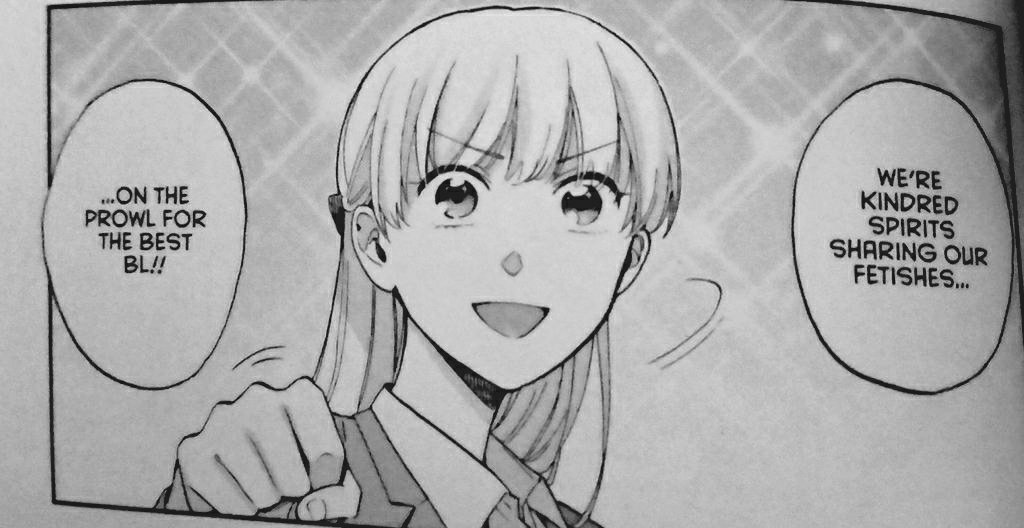
The comedy is heavy in the manga, which makes the touching romantic moments stand out all the more. And the mangaka, Fujita, isn’t overly precious about those moments. Narumi is pretty clueless about both her own feelings and those of Hirotaka, but in a way that feels genuine as opposed to frustratingly ditzy. She and Hirotaka have been friends forever, so their relationship is already rock-solid, their trust already established. She relies on him to keep her grounded, and enjoys his company regardless of their new dating status. I’ve always been a firm believer in friendship being the cornerstone of any romantic relationship, so I love the way theirs develops.
I don’t want to give too much away, but from the first two volumes alone, it appears that I’ll be getting my fill of wacky antics, nerdy in-jokes, heart-rending backstories, and genuinely moving romantic gestures. I’m grateful for a series that recognizes the growth in my tastes, but also the state of my concerns as an adult woman. With the anime streaming right now, I hope that the manga becomes the success it deserves to become and thus ushers in a new wave of licenses for the modern otaku lady and her modern lady concerns!
